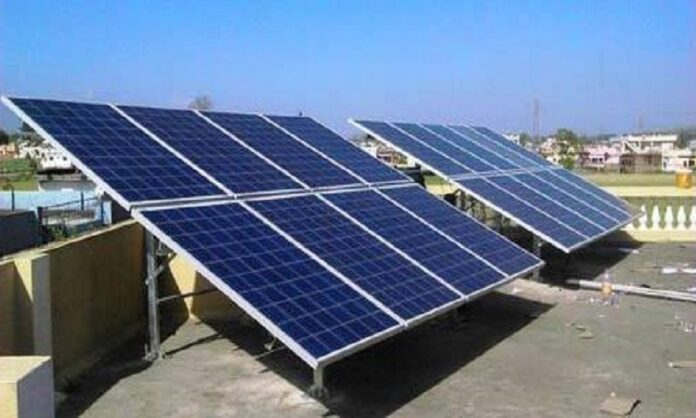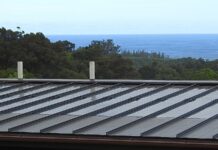New Delhi: The cumulative rooftop solar (RTS) installed capacity increased from 10.4 gigawatt (GW) on November 30 this year as compared to 1.8 GW reported by various distributions companies (Discoms) on March 31, 2019, said in a reply from the Union ministry of new and renewable energy (MNRE) in Lok Sabha.
The report stated that the compound annual growth rate (CAGR) of RTS installations is around 46%, thanks to various initiatives taken by the MNRE over the past five years to promote harvesting renewable sources of energy. The initiatives to encourage people to go for RTS included launching of national portal to accept application for installation of rooftop solar by residential consumers and get subsidy directly into his bank account under the programme and framing of rules to allow net-metering up to 500 Kilowatt or upto the electrical sanctioned load, whichever is lower.
Also Read: IREDA ties up with IIFCL to finance renewable energy projects
The central government acted as facilitator to allow concessional loans from multilateral agencies such as the World Bank and inclusion of renewable energy under priority sector lending guidelines of the Reserve Bank of India (RBI).
Union minister for new & renewable energy and power RK Singh has informed that the rate of growth of renewable energy capacity in the country has been one of the highest globally in the last 5 years.
MNRE launched rooftop solar programme phase-II on March 8, 2019 with an objective to achieve 40 GW of RTS. The programme envisages installation of 4,000 MW of RTS capacity in the residential sector by providing central financial assistance (CFA). The CFA admissible for general category states is ₹14588/kW for first 3 kW RTS capacity and ₹7294/kW for RTS capacity beyond 3 kW and up to 10 kW.
Also Read: CIL subsidiary plans to develop 600MW solar power projects
For special category states (North-eastern states including Sikkim, Uttarakhand, Himachal Pradesh, UT of Jammu & Kashmir, Ladakh, Lakshadweep, and Andaman & Nicobar Islands), the admissible CFA is ₹17662/kW for first 3 kW RTS capacity and ₹8831/kW for RTS capacity beyond 3 kW and up to 10 kW. The resident welfare associations/ group housing societies (RWA/GHS) are also eligible to avail CFA for RTS installation in common facilities, up to a maximum of 500 kW capacity. The CFA admissible for RWA/GHS is ₹7294/kW in general category states and ₹8831/kW in special category states.
The financial outlay of the phase-II RTS programme is ₹11,814 Crore which includes ₹6,600 Crore of CFA and ₹4,985 Crore of incentives to the Discoms. The Programme has been extended till March 31, 2026 without change in the financial outlay initially approved for the programme.
Also Read: Green hydrogen can cut down renewable energy cost to ₹6/unit
There is inherent seasonal variation in energy production from various renewable energy sources, including solar, wind, and hydro. The variability in energy production from these sources exhibits complementary characteristics, for instance, solar generation is reduced during monsoon months, when wind and hydro generation is higher. A mix of different renewable energy sources can be utilized to reduce the overall variability.
Accordingly, the government of India’s policies and programmes support deployment of different renewable energy sources, including hybrid combinations of different sources. “The present prices of solar PV cells and module are around their lowest levels in last one and half years or so. Thus, the present prices of solar PV cells and modules are not preventing the growth of solar power installations,” said the reply.




